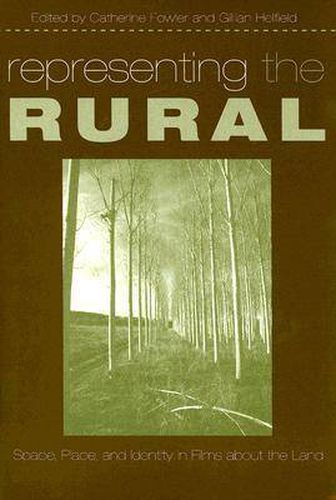Readings Newsletter
Become a Readings Member to make your shopping experience even easier.
Sign in or sign up for free!
You’re not far away from qualifying for FREE standard shipping within Australia
You’ve qualified for FREE standard shipping within Australia
The cart is loading…






This title is printed to order. This book may have been self-published. If so, we cannot guarantee the quality of the content. In the main most books will have gone through the editing process however some may not. We therefore suggest that you be aware of this before ordering this book. If in doubt check either the author or publisher’s details as we are unable to accept any returns unless they are faulty. Please contact us if you have any questions.
Although the urban setting in film has received much critical attention, little has been written about the use of land, or the rural, in the cinema - despite its equally prolific and consistent history as a backdrop to both fiction and documentary work. This collection demonstrates the viability of rural cinema as a benchmark of national identity by bringing into critical focus the space the rural occupies, both on cinema screens and in the national imagination. Whether rural space is figured as idyllic or troubled, mythological or historical, obsolete or perennial, this collection argues that it constitutes a rich medium through which to enunciate shifting concepts of identity and nationhood. Spanning time periods and world locations, the films discussed in this volume use the land as physical territory, living place, unspoken character, or mythic and symbolic presence. The book’s twenty chapters fall into four thematic sections. In
Land
and
Peasants,
the focus is on films in which land is seen from the perspective of its inhabitants. Essays in
Landscape
and
Rural and Nation
examine films in which the landscape functions an index to national identity. Here, geography is taken to an ideological level, where the land is key to the social and national cohesion of its inhabitants and to their cultural survival. In all, the essays presented explore the inextricable link between the urban and the rural as points of tension rather than simple points of contrast.
Representing the Rural
attempts to formulate a template for rural cinema, set forth its most salient characteristics and provide a guideline for discussion and analysis. Students and film scholars will appreciate this unique volume.
$9.00 standard shipping within Australia
FREE standard shipping within Australia for orders over $100.00
Express & International shipping calculated at checkout
This title is printed to order. This book may have been self-published. If so, we cannot guarantee the quality of the content. In the main most books will have gone through the editing process however some may not. We therefore suggest that you be aware of this before ordering this book. If in doubt check either the author or publisher’s details as we are unable to accept any returns unless they are faulty. Please contact us if you have any questions.
Although the urban setting in film has received much critical attention, little has been written about the use of land, or the rural, in the cinema - despite its equally prolific and consistent history as a backdrop to both fiction and documentary work. This collection demonstrates the viability of rural cinema as a benchmark of national identity by bringing into critical focus the space the rural occupies, both on cinema screens and in the national imagination. Whether rural space is figured as idyllic or troubled, mythological or historical, obsolete or perennial, this collection argues that it constitutes a rich medium through which to enunciate shifting concepts of identity and nationhood. Spanning time periods and world locations, the films discussed in this volume use the land as physical territory, living place, unspoken character, or mythic and symbolic presence. The book’s twenty chapters fall into four thematic sections. In
Land
and
Peasants,
the focus is on films in which land is seen from the perspective of its inhabitants. Essays in
Landscape
and
Rural and Nation
examine films in which the landscape functions an index to national identity. Here, geography is taken to an ideological level, where the land is key to the social and national cohesion of its inhabitants and to their cultural survival. In all, the essays presented explore the inextricable link between the urban and the rural as points of tension rather than simple points of contrast.
Representing the Rural
attempts to formulate a template for rural cinema, set forth its most salient characteristics and provide a guideline for discussion and analysis. Students and film scholars will appreciate this unique volume.